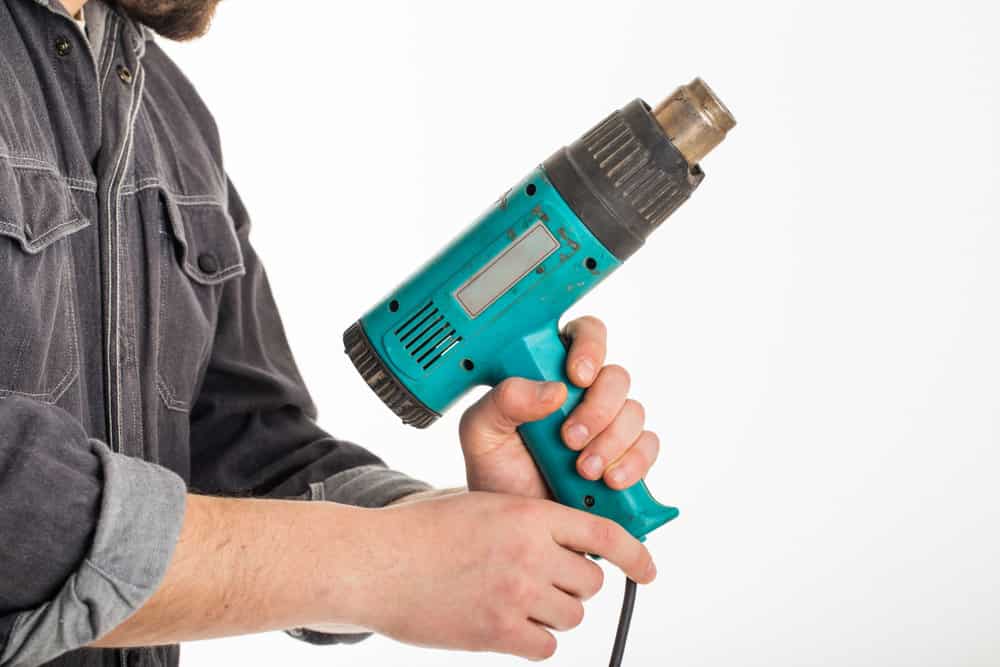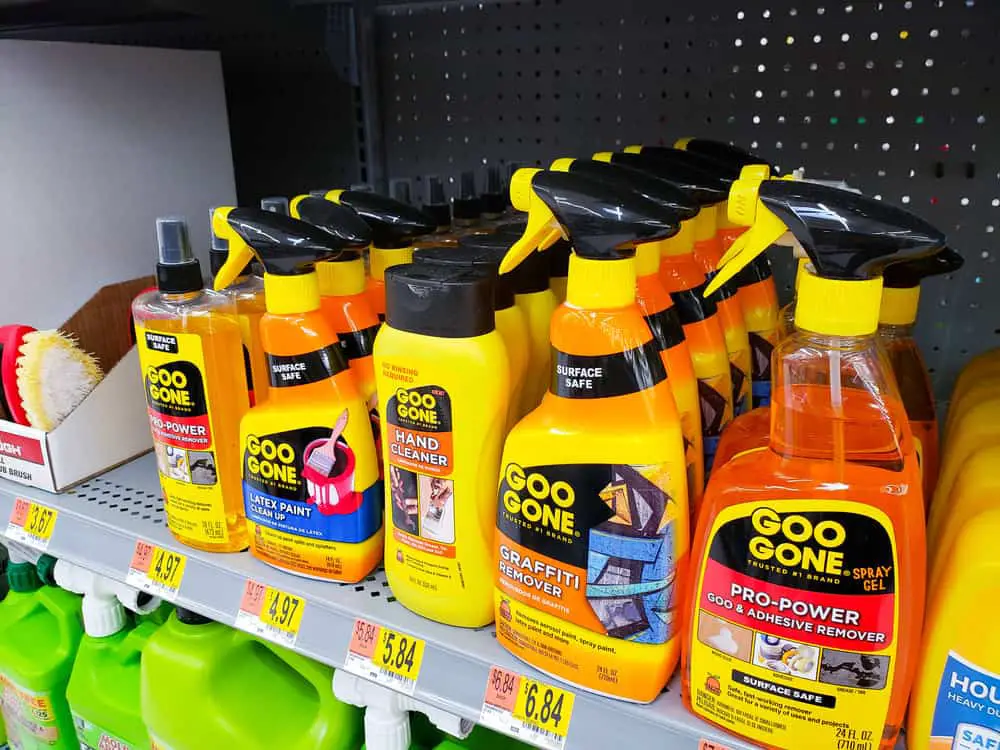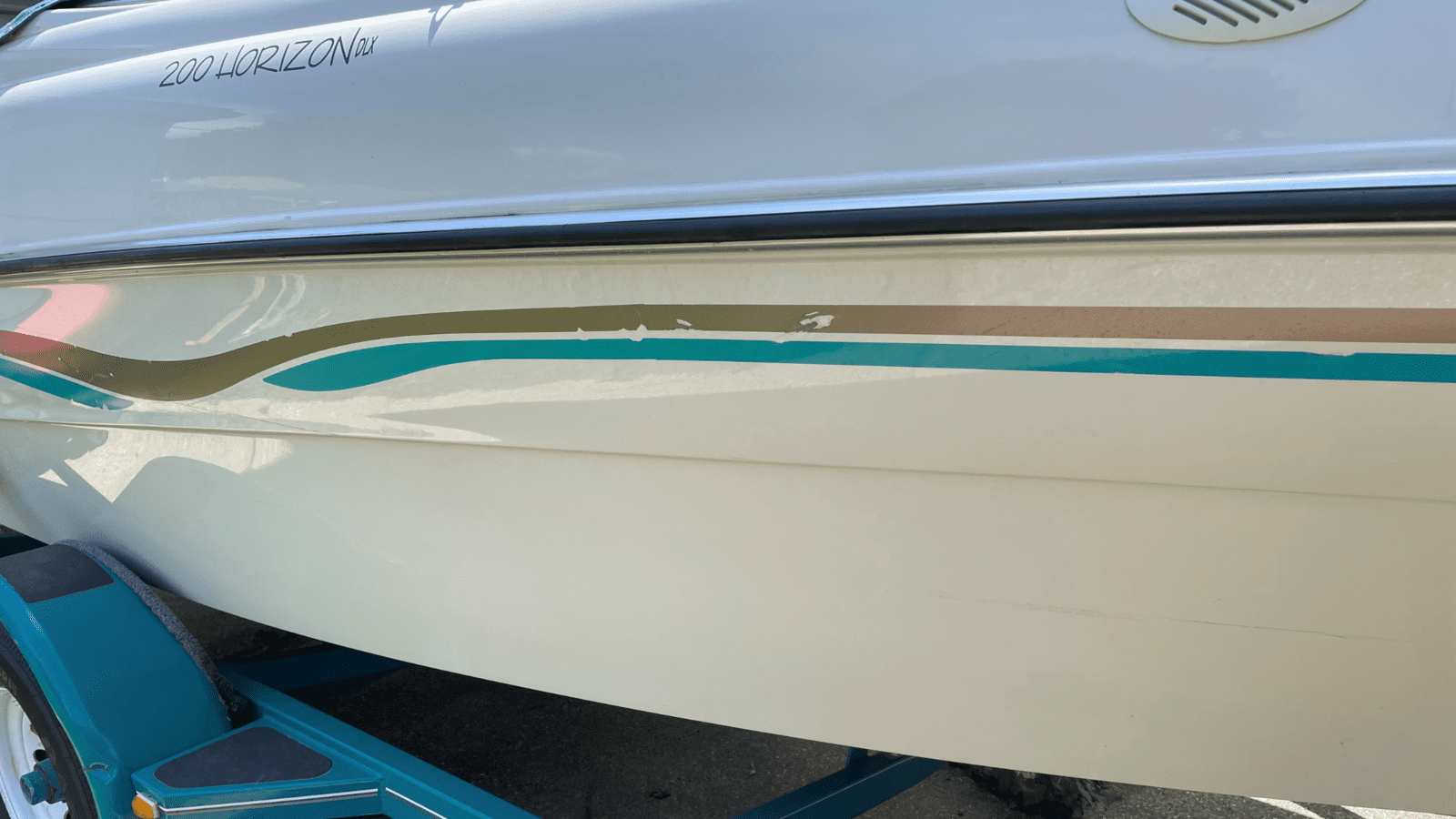Removing the decals on your boat is easier than you might think. With a bit of patience and plenty of elbow grease, you can choose any of the following methods to get the decals off. The biggest thing you have to remember in attempting this is that whatever you try, you must be careful not to damage the gel coat or paint job of your boat.
Method 1. Heat Gun And Plastic Scraper Method
The most used method to remove decals from your boat is applying heat and then scraping it off with a plastic scraper. If the vinyl decals are not too ancient or if the boat decals you want to remove are old, follow method two.
Step 1. Heat The Decals With A Heat Gun

To effectively remove the decals start by heating the vinyl with a heat gun or hairdryer. A heat gun will be most effective, but if you have no other option, you could try using a hairdryer by having it on its highest power and warmest heat functions.
With the heat gun in hand, move it sideways and up and down until the vinyl becomes soft and pliable.
The best method would be to keep moving the heat gun over the vinyl. Keeping the heat gun in one place can quickly burn your boat’s gel coat.
Step 2. Pulling The Decals Off
Once the vinyl becomes soft and pliable, you can now try to remove it by lifting the edges with a straight razor, a plastic scraper, or even the tip of your nails.
Be careful not to gouge the boat’s gel coat or paint job. If the vinyl does not seem to budge at the edges, instead try to heat it some more before damaging your boat.
Once the vinyl edges start to come loose when you are lifting it with the razor or plastic scraper, you can start peeling the vinyl away.
Move down from top to bottom with the scraper lifting the vinyl as you go.
Keep the heat gun moving around the vinyl decal as you pull it away from the boat.
Step 3. Cleaning The Leftover Adhesive From Your Boat

Using this method often leaves some of the vinyl adhesives behind. Luckily you can easily wipe this off with an inexpensive solvent such as Sticker Off or Goo Gone.
Spray some of the Sticker Off, or Goo Gone onto the adhesive residue and, using some elbow energy, wipe it off with a clean cloth.
Some people like to use acetone or mineral spirits; however, when using acetone, you need to clean it off as quickly as possible; otherwise, it can damage your boat’s gel coat. So keep a wet cloth nearby if you are working with acetone or mineral spirits on your boat.
Method 2. Using Vinyl Off To Clean Boat Decals
Another method you could use to remove boat decals is by applying some Vinyl-Off solvent to it. This method is handy when removing ancient vinyl decals from your boat.
Step 1. Apply Vinyl Off To The Decals
Apply a generous amount of Vinyl-Off to a cloth and rub it over the vinyl decals. Vinyl-Off restores the vinyl to its original condition, making it easier to remove as a whole.
Give it a minute or two to start working, and you can start to peel off the vinyl decal, beginning at the top and working your way down.
The vinyl decals will come off quite easily and leave some adhesive residue behind.
Step 2. Cleaning The Leftover Adhesive From Your Boat.
Even though the vinyl decal comes off easily with little to no effort using Vinyl-off, some adhesive residue will be left.
You can clean off the residue the same way as in method one, by using some solvent such as Sticker Off or Goo Gone.
Method 3. Using An Eraser Wheel To Remove Boat Decals
An Eraser wheel works on the same concept as a pencil eraser, except it covers a larger area and works excellent on boat decals. All you need to use the eraser wheel is to attach the adapter to the wheel and then to your household drill, and you are ready to wheel off.
Some people believe that using an eraser wheel is one of the least damaging ways to remove boat decals from your boat, and if you have a pretty large area to cover, they are pretty inexpensive, so it might be worth it to purchase one.
Step 1. Removing The Decals By Use Of An Eraser Wheel
With the wheel attached to the drill per the manufacturer’s instructions, start to ‘erase’ the vinyl. This will go pretty quickly, and you will notice that the residue decals are scattered between adhesive and vinyl particles on the once used to be decal area.
Step 2. Removing The Adhesive Residue From The Boat
As with the previous two methods mentioned in this article, you will be left with some adhesive residue, making your boat constantly feel sticky and making it difficult to place new decals on the same spot. And that is why we clean off the previous adhesive and vinyl residue thoroughly before further sticking anything to the boat.
Apply some Sticker Off or Goo Gone to the area or a clean rag and rub off any adhesive or vinyl residue left.
Cleaning The Area Where The Decals Used To Be
Once you have removed your decals and the adhesive from your boat, you will need to give the area a good clean. Using warm water and some dish soap usually does the trick.
- Put some warm water in a bucket and a generous squeeze of dish soap. Mix it well.
- Soak a clean cloth or rag in warm soapy water and start cleaning the area.
- Rub along the area well, and if any residue is left, cleaning it up with warm water and soap will make it come off quickly, giving you a smooth and clean surface ready to apply your new decals.
- Once clean, wipe it dry with another clean cloth.
Conclusion
Most modern-day boats are made from fiberglass and will thus have a gel coat finish. If your boat has been painted, all of the above should apply and work perfectly. However, it is best to steer clear of acetones and mineral spirits to clean up adhesive on paint as it can damage the paint job.
Regardless of the method you will use to remove the decals on your boat. It is crucial always to ensure that you are not doing something that will affect your boat’s finish. Most fiberglass boats have gel coat finishes, so be careful with heating and using an abrasive solvent like acetone to clean it up.
Project “Remove Boat Decals” Boating
Check out our article on: How To Beach A Boat: (Two Must Know Techniques!)

